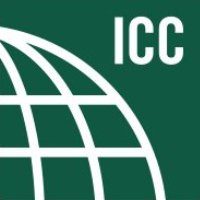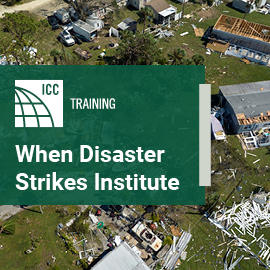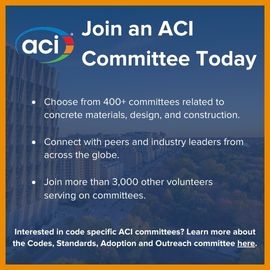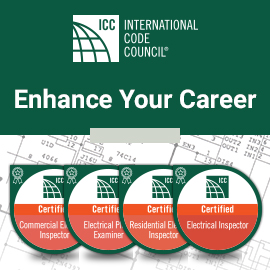
How the International Codes facilitate our response
Code departments are adapting to ensure that they can continue to perform their public safety mission while protecting code officials, the construction workforce and the public at large from the spread of COVID-19. To support our members at this time, the International Code Council has compiled examples of how different aspects of the International Codes (I-Codes) facilitate our response to pandemics like COVID-19 and help keep people safe in the buildings where they live, work and play. This document also addresses federal guidance that permits additional flexibility in hospital standards to aid in the expansion of services to fight the coronavirus pandemic.
The International Mechanical Code
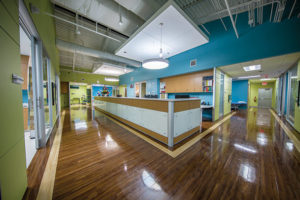
New and existing mechanical systems must be maintained. Through Chapter 1 of the IMC, healthcare facilities must, through inspections and maintenance, preserve a HVAC system’s ability to achieve acceptable indoor air quality. This means cleaning or changing filters to avoid contaminant buildup and maintain airflow and ensuring that the ultraviolet (UV) intensity of systems using UV disinfection is monitored and maintained, where this type of UV system is used.
Many studies suggest that poor ventilation increases disease transmission. This is an important factor in hospital settings where frontline healthcare workers are currently coping with a shortage of personal protective equipment. Studies following the SARS and MERS outbreaks demonstrate that adequate ventilation can reduce the likelihood of a contaminant’s airborne transmission. Like COVID-19, both SARS and MERS are coronaviruses suspected of spreading from animals to humans.
The International Plumbing Code
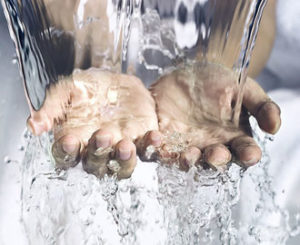
Chapter 6 regulates the supply of water to maintain potability and prevent contamination. Given potable water is critical for those already weakened with illness or recuperating, Chapter 6 requires healthcare facilities employ two service pipes to minimize the potential for an interruption during a water main or water service pipe failure.
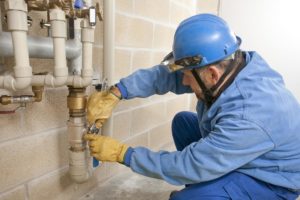
Chapter 7 of the IPC requires drainage systems function reliably. They must be appropriately sized, which mitigates against backups. They must also be constructed from materials, fittings and connections, whose quality is regulated, which prevent against breaks and leakage. Chapter 8 ensures ancillary systems, like HVAC system humidification equipment, is also protected against backflow. Chapter 10 contains design requirements and installation limitations for traps, which protect building occupants from vapors within the drainage system. Chapter 9 specifies several methods to properly vent plumbing fixtures and traps. During the SARS outbreak, transmission was known to occur through dry traps (u-bends) that failed to stop aerosols from being released into bathrooms.
International Existing Building, Building and Fire Codes
On March 30, the U.S. federal government announced additional flexibility in hospital standards to aid in the expansion of services to fight the coronavirus pandemic. These rules – subject to state and local requirements – permit non-hospital buildings to be used for patient care and quarantine sites to increase medical surge capacity. The identification and use of alternate care sites and facilities varies by jurisdiction. Jurisdictions may consider temporary changes in occupancy and use for inpatient and outpatient medical facilities as well as large venues such as conference centers or arenas, hotels, schools or recreation centers. Jurisdictions may also utilize temporary structures such as tents or membrane structures.
Conversion of existing buildings to alternate care facilities
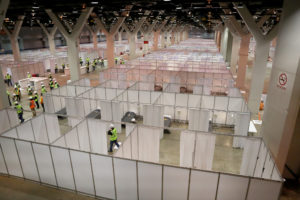
Temporary use of tents or membrane structures for less than 180 days
Chapter 31 of the International Fire Code (IFC) addresses the use of tents or membrane structures for less than 180 days. Many communities are using tents in parking lots or other green spaces in their communities to create additional medical surge capacity. Chapter 31 helps code officials ensure these structures are located safely, have adequate access for emergency vehicles, maintain sufficient security and accessibility, facilitate traffic flow, and consider staging locations. Chapter 31 also requires these structures to withstand common natural hazards, including wind, snow and rain loads. Additional provisions address air quality and ventilation, electricity and emergency power, and plumbing and sanitation. Finally, Chapter 31 requires adequate egress, fire safety measures, and appropriate floor coverage to mitigate falls.
All other temporary structures including use of tents or membrane structures greater than 180 days
Chapter 31 of the International Building Code (IBC) and IFC have coordinated provisions that work together to address the use of all other temporary structures. This also includes the use of tents and membrane structures beyond 180 days. These measures are more prescriptive due to the longer-term nature of the temporary use.
Code officials and the I-Codes play an important role in responding to pandemics
From ensuring healthcare infrastructure, including temporary structures and occupancies, is built and maintained to ensure occupant safety, to enforcing regulations that require disinfection of ventilation systems in hospitals, adequate facilities to ensure handwashing, and safe and sanitary plumbing systems that mitigate the spread of contagions, code officials, and the I-Codes they rely on, help communities respond to pandemics.
